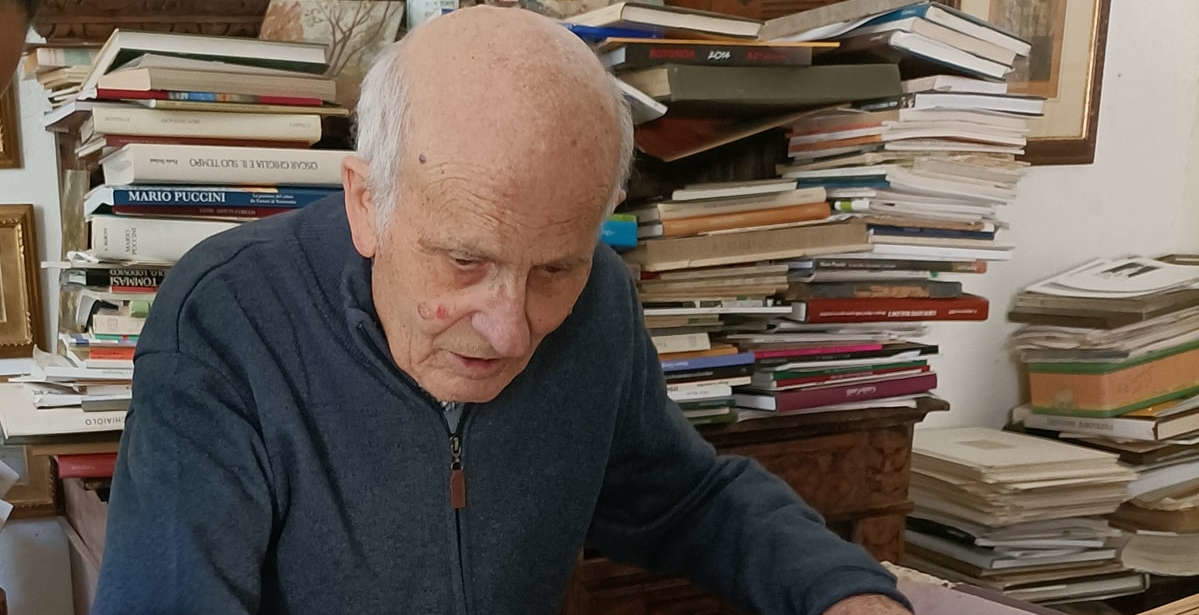Collector Carlo Pepi, known as a great expert on the art of Amedeo Modigliani and for exposing many Modigliani forgeries, passed away today at the age of 87. Confirmation came late today morning from his family. His passion transformed his villa in Crespina, in the hills beyond Pisa, into a kind of museum of Italian art from the 19th to the 20th century. Born in Nuoro in 1937, he had established himself as a leading authority on the painter Amedeo Modigliani and as an expert on the Macchiaioli, and he championed a style of collecting outside the institutional box for decades.
His private collection, consisting of tens of thousands of works-estimated today at around 20,000 pieces including paintings, drawings, documents, and notes-unfolds without a catalog in Crespina. It is a dense corpus, where next to masterpieces by Fattori, Lega, Macchiaioli and exponents of the second avant-garde of the twentieth century, coexist testimonies of lesser-known artists that Pepi considered worthy of salvation from oblivion(here is our in-depth study).
Pepi had a degree in economics (he was an accountant by trade), and despite his knowledge of art he never wanted to be part of academia. Self-taught, he began at a young age to invest his savings in the purchase of works, even going into heavy debt, moved by a documentary scruple and pure delight," not by economic interest. He even refused an honorary degree because he did not want to be associated with the titular privileges of the environment.
His collecting was also battle. Among the most notorious episodes, in 1984 he was the first to claim that the famous “heads” found in Livorno’s Fosso Reale and suddenly attributed to Modigliani were fakes, and his hunch was confirmed when it was discovered that they had been made with a drill by a group of students who wanted to make fun of academia. Similarly, in 2017 he raised doubts about the authenticity of several Modigliani works exhibited at the Palazzo Ducale in Genoa during an exhibition: his complaint triggered a proceeding during which an expert witness ascertained their falsity.

In 2025, the Municipality of Crespina-Lorenzana and the Region of Tuscany paid him an official tribute: the awarding of the Winged Pegasus for his dedication to culture. A foundation project was also announced to catalog and make his precious heritage publicly available. His home is not a conventional museum, but a kind of Wunderkammer: the works, crammed in every room, drawers or even bathrooms, emerge from a calculated chaos, precisely because Pepi, although he had no written record, remembered with extreme precision the location of each piece.
The collector sustained strong human ties with artists: he bought directly from the creators, becoming a friend and supporter of many, even when on the critical level they were ignored or marginal. Pepi did not like to talk about monetary values. Although he was well versed in numbers, he avoided discourses on the price of works, limiting himself to recognizing in them a cultural and affective value, sometimes greatly anticipating the critical recovery of entire artistic strands. With Carlo Pepi, Italian art loses one of its great protagonists: far from the academies, bearer of an intuitive and documented culture, capable of transforming his home into an undisciplined treasure chest of art and memory. At the center of his life was a profound sense of beauty, associated with the idea that contrasting truth and falsehood is a moral urgency in the face of the commodification of artistic heritage.
 |
| Farewell to Carlo Pepi, the self-taught collector who unmasked fake Modigliani |
Warning: the translation into English of the original Italian article was created using automatic tools. We undertake to review all articles, but we do not guarantee the total absence of inaccuracies in the translation due to the program. You can find the original by clicking on the ITA button. If you find any mistake,please contact us.